F1 | British GP: the fight for victory between accidents, tires and fuel
Lewis Hamilton wins the British GP amid controversy, while Charles Leclerc comes close to achieving the feat
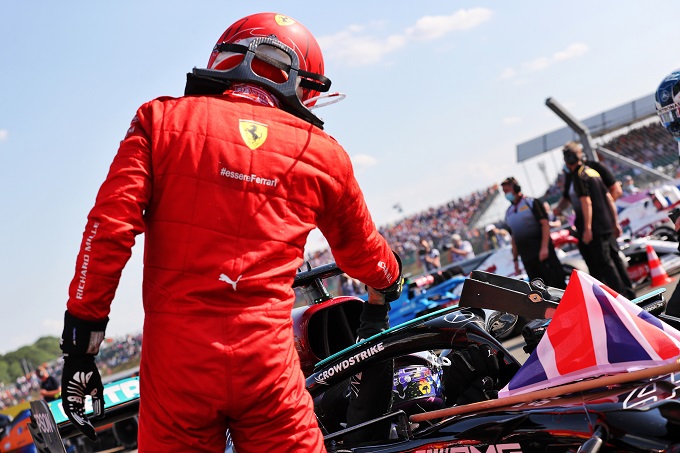
On the track that had seen him triumph on seven occasions, one of the most anticipated drivers was Lewis Hamilton and the home idol did not disappoint his fans, adding another success in Great Britain to his personal collection. A race which however saw him as a protagonist for better or for worse, because the accident during the first lap with Max Verstappen brought with it a long trail of controversy, diverting attention from what actually happened in the rest of the race where, despite the ten second penalty, the Englishman managed to beat the other real protagonist of the day, Charles Leclerc, author of a sublime performance rewarded with a second place that leaves one saddened by a near-miss.
When the traffic lights went out, contrary to what had happened in the sprint qualifying, Hamilton had been the author of an excellent sprint, thanks to which he had been able to come alongside Verstappen before entering turn one, an extremely fast section that generally pilots try to go full speed even with fully loaded tanks. In order to avoid a contact that would have put an early end to both of their races, however, the Englishman had taken his foot off the accelerator, thus letting his rival slip away. Hamilton, however, was well aware that the first lap would represent his most important chance to turn the tide of the race and he did not give up, looking for the intersection in turns three and four to guarantee a better traction phase and attack before the Brooklands. A maneuver that had borne fruit, thanks to which the Mercedes driver was once again able to come alongside him on the straight before giving way again to the Dutchman who, with a very deep braking, was able to repel the attack and stay ahead. Realizing that there were no margins to complete the maneuver, the seven-time world champion had acted with great cunning, keeping wide at the entrance to Brooklands, in order to make another trajectory crossing that would have allowed him to make the most of the ski and try again at Copse, one of the most exciting curves of the entire calendar.
With that particularly low set-up, also designed to fill the gap in qualifying that had been found in the last few rounds, that first lap could have really decided the fate of the race, as playing it strategically later would not have been a simple undertaking, especially considering Red Bull's potential during the sprint qualifying on Saturday, where it had imposed its own pace, limiting Mercedes' chances of making itself truly threatening. Precisely for this reason Verstappen had reacted with equal aggression to his rival's moves and the closure before turn nine was proof of this. In an attempt to complete the overtaking, however, Lewis had still tried to slip into that gap on the inside which was gradually closing, in the hope that it would be the rider of the Milton Keynes team who lifted his foot and not the other way around. A risky but decisive manoeuvre, especially keeping in mind that the moment to set the next bend would arrive a few meters away, with the risk of finding oneself on such an internal trajectory that one would then have to collide with annoying understeer, an element that would made it even more complicated to complete the overtaking. At that point, given the characteristics of that stretch of track, one of the two would have had to leave, as a possible contact was just around the corner, risking ending their race prematurely.
In the post-race there were many discussions regarding what the two standard bearers of Red Bull and Mercedes should have done but, at the same time, it is also true that in such a close world battle it is difficult to think what is really going on in the minds of the drivers , especially if a few points could decide the fate of the championship. Could Verstappen have quit? Maybe yes, given that at that moment he found himself at the top of the standings with a lead of 33 points, but it is also easy to understand why he decided to be so aggressive and not give way. On the one hand, simply because he was on a more favorable trajectory, on the other because defeating his rival at home and approaching the summer break with a considerable advantage could have represented a significant factor in the championship fight, without forgetting that the next round, the one of Hungary, over the last few years has often proved favorable to the characteristics of the cars designed by the group led by Adrian Newey.
Observing the telemetry, it is possible to see how, aware that there was no space to cover that stretch of track together, Hamilton had not only raised his foot on the accelerator to push the brake, but also downshifted two gears, in order to slow down his pace and avoid a collision. Evasive maneuvers which, however, had not given the desired effect as they arrived too late, at a point from which there was no longer any return: with such a high approach speed and such a narrow trajectory, it was essentially impossible for the Englishman to avoid that annoying understeer which would then have led him to widen the curve, thus ending up against Verstappen who, on the contrary, had not attempted to take any countermeasures at all, maintaining an extremely decisive approach. Max, in fact, had not only delayed the moment in which to leave the accelerator as much as possible, but had not even downshifted, always remaining in seventh: observing his trajectory, moreover, it is possible to see how the Dutchman was not exactly on the line ideal, but on a slightly more internal route. If on the one hand Hamilton had proven aggressive in his approach, this could even be extended for the Hasselt driver, who would not have given up even a centimeter to his rival, so much so that he even made a small correction when entering. Everyone would have their reasons: the Red Bull rider was in front and better positioned to cover that stretch of the circuit but, at the same time, Lewis could have counted on the fact that he was now almost aligned with his rival, thus finding himself in the position to make that attempt . With such a heated rivalry and such a complex situation, in which neither of the two would have wanted to give up, the contact seemed inevitable, just as it actually occurred: a "light" contact, so much so that the Mercedes champion would not have suffered such damage extensive on his single-seater, but enough to send Verstappen into a spin and, subsequently, into the barriers, with an impact of no less than 51G which, given its violence, required hospital checks to verify that all the parameters were within normal limits. An accident for which the Briton was penalized by the stewards with a ten-second fine, to be served at the time of the first pit stop.
A penalty that is too light or excessive? It is best to start keeping in mind that the sanctions decided by the stewards do not take into account the consequences of the accidents, given the numerous variables that could come into play. An accident with clear responsibilities, in fact, could have fewer consequences than a contact with less defined faults but with much more serious effects. In this specific case, observing the dynamics of the episode, the commissioners assessed that the greatest responsibility should be assigned to Hamilton since, having ended up in understeer, he would not have been able to go through the curve centering the apex, but would have instead reached the contact with Verstappen, as actually occurred. It was precisely this element, having missed the apex, that pushed the stewards to assign a penalty: undoubtedly a corner could be taken even without hitting that objective, but in this case Lewis, in an overtaking situation, did not he would have managed to follow it, ending up off the track at the exit, taking the Dutchman with him. On the other hand, it must be kept in mind that, although the Hasselt driver had been aggressive in his attempt to defend himself, he had still left the necessary space for the car on the inside, thus respecting the regulations. The only way Verstappen could have avoided contact was therefore to completely yield the corner and give way to his rival, behavior that we would probably never have seen from the young Red Bull talent. Having established the responsibility of the Englishman, the commissioners opted for a penalty of ten seconds, appropriate to the "crime": the telemetry tells, in fact, how Hamilton had attempted to slow down, albeit very late, trying to avoid contact and this, probably, they softened the stewards' decision, limiting the sanction.
It was Charles Leclerc who took advantage of the accident and, with a clever move, found himself in the lead of the Grand Prix, before the display of the red flag gave Hamilton the opportunity to repair the car, in particular by replacing a rim damaged which could have completely failed at any moment, leading to retirement. At the restart, the Monegasque from Ferrari had been able to maintain the lead of the race, quickly taking a small advantage to push his rival out of the DRS zone and enough to think he could think about how to manage the first stint on the medium, the compound with the Ferrari from Maranello would have proved more competitive. On the other hand, Hamilton tried to maintain the pace, but by remaining in the wake the risk was to overheat the tires, increasing their degradation and it was precisely for this reason that in the first part of the race he performed a sort of elastic effect, getting closer before moving away again. again to take up space and let the car breathe. Knowing they could keep their rival behind for the entire duration of the stint, Ferrari were able to concentrate on managing the pace, but it was clear that the SF21 was showing a good pace, enough to keep the Mercedes at bay despite some small inconveniences. technical, such as a power cut during the fifteenth and sixteenth laps, when the Monegasque had felt a drop in the engine at two different points on the track. An extremely annoying problem, on which Ferrari intervened quickly, suggesting particular mappings aimed at managing the sensors that had limited the disturbances, effectively solving the fault. This had allowed them to continue pushing until the moment of the break, when the Italian strategists would have had to make a decision. The basic idea was to continue for as long as possible, as the Italian car had proven extremely competitive with that compound, while the hardness remained a sort of unknown. Over the radio, Leclerc had not reported a drop in tire performance, a reason that had pushed the team to continue its program undisturbed, also because there was another element to take into account: Leclerc would not have been able to stop before Sainz, as the when he returned to the track he would have finished behind him. Although exchanging positions might have seemed like a practical solution for the Monegasque, it would not have been so for the Spaniard, who would have wasted useful time by leaving his teammate while he was engaged in a long-distance duel with Daniel Ricciardo. Basically, therefore, until Sainz stopped, Leclerc wouldn't be able to either.
In the meantime, after following the Ferrari driver for a long time, leading to degradation of the front left, Hamilton had asked if it was possible to return to the pits, thus switching to the hardest tire in the range brought by Pirelli to Silverstone. Having had to serve the penalty for the contact on the first lap, however, Lewis had lost several positions, not only in spite of his teammate, but also of Lando Norris. Within a few laps, however, the Briton had managed to subvert the situation, even overtaking the McLaren driver with some ease, who had not shown great resistance in repelling his rival's attacks. With the hard compound and the possibility of running longer in free air, Hamilton seemed to have found new life, avoiding the overheating of the tires that had characterized the first stint of the race where, remaining in Leclerc's wake for a long time, he was unable to best express one's pace, thus having to settle for defensive conduct. Thus began his comeback, while, on the contrary, those ten extra seconds had given the Monegasque from Ferrari the opportunity to manage the pace in a delicate phase of the race, the one on new tyres, where excessive effort would have led to a premature tire degradation. Furthermore, Leclerc was in a delicate phase of the race, as he had been forced to make significant lifts and coasts in order to save fuel: although spending the first part of the race in free air had given him the opportunity to manage the pace, at the same time, skidding would have allowed him to limit his fuel consumption. All these elements had meant that Charles was forced to lose precious tenths of a lap, which would have made themselves felt with a few laps to go, with Hamilton almost a second faster. In fact, with two laps to go, the Mercedes driver was able to overtake his Ferrari rival with a maneuver similar to the one he had performed with Verstappen at the start of the race. The most important difference, however, was found in the fact that Leclerc did not put up much resistance, allowing Hamilton to set up in the best way and make the overtaking maneuver easier, thus leaving the field free for the Briton to hit his ninety-ninth victory, the eighth on home soil.
if you want to always be updated on our news
Follow us here



![F1 | Imola and Ferrari's all-in for the 2024 season: the analysis [VIDEO]](https://f1grandprix.motorionline.com/wp-content/uploads/2024/05/f1-gp-imola-ferrari-1024x554.jpg)
![F1 | Imola and Ferrari's all-in for the 2024 season: the analysis [VIDEO]](https://f1grandprix.motorionline.com/wp-content/uploads/2024/05/f1-gp-imola-ferrari-500x271.jpg)
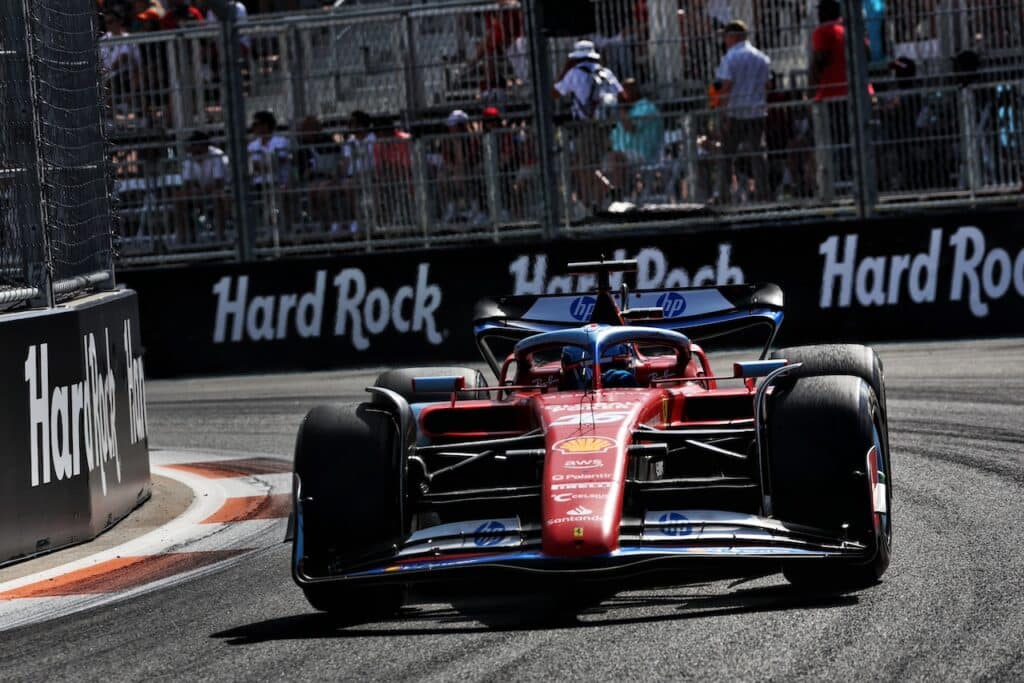
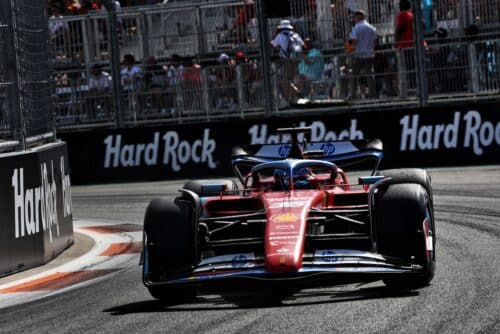
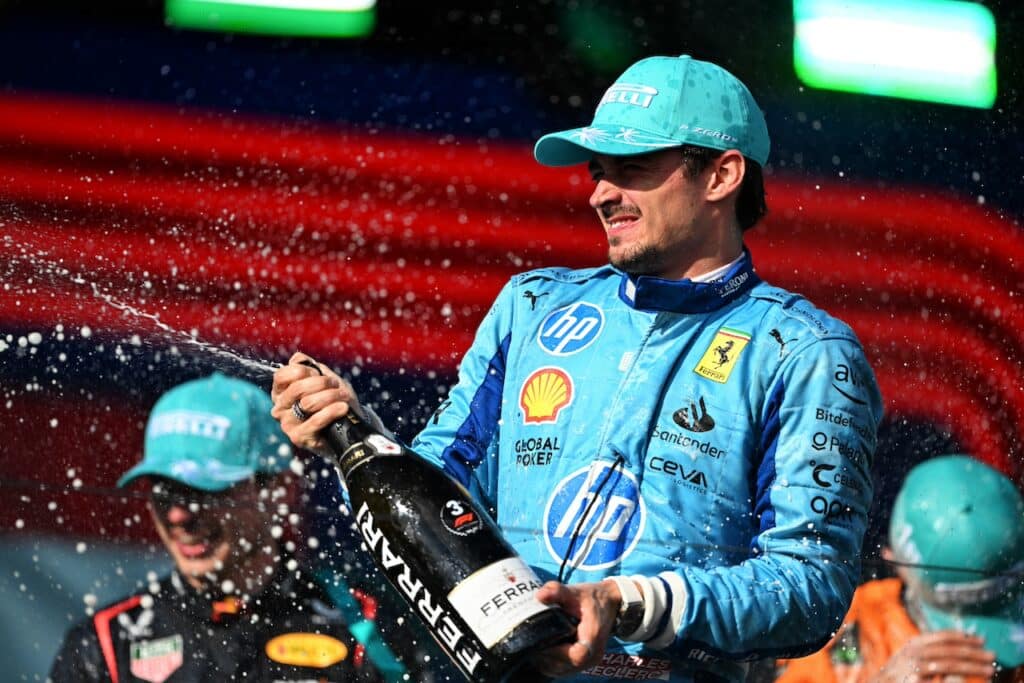
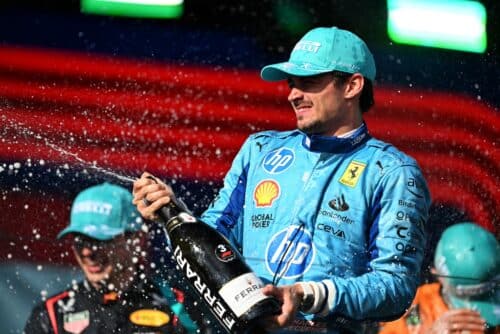
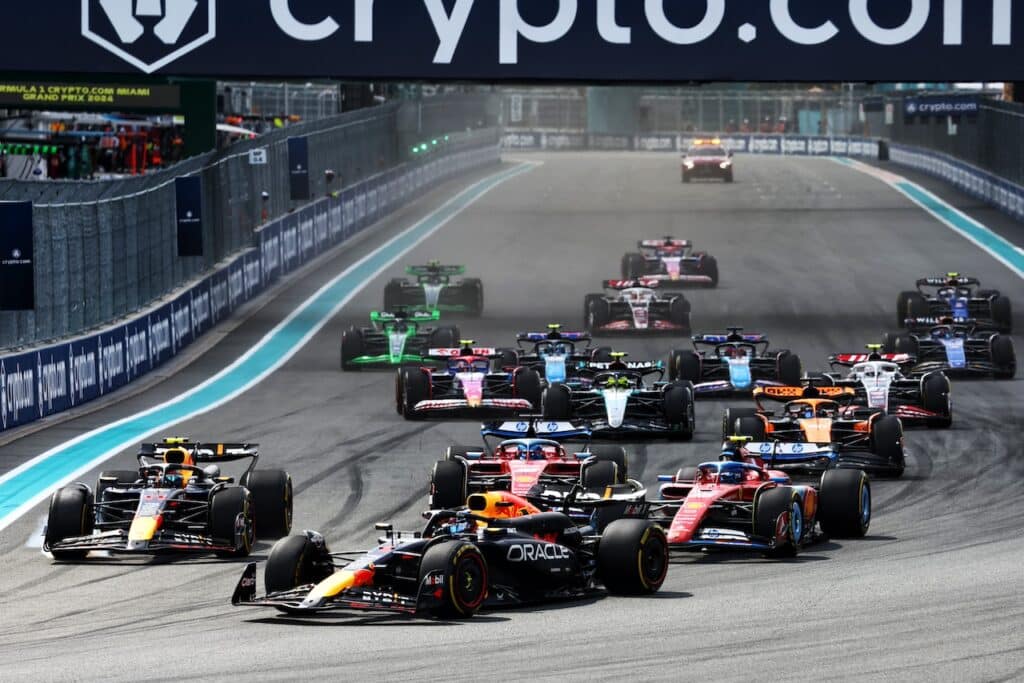

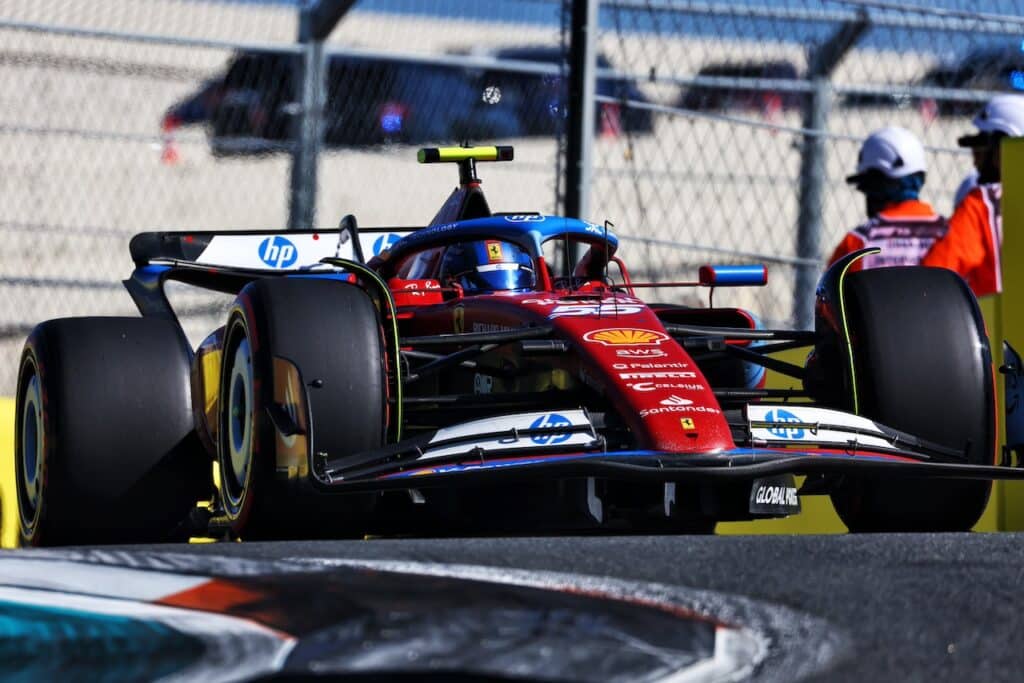
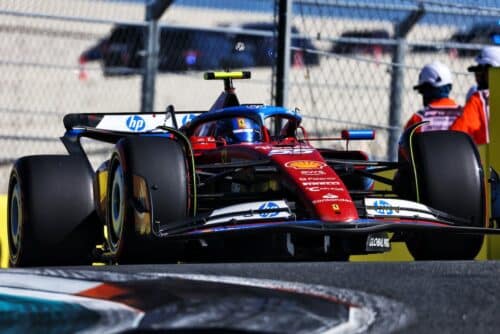
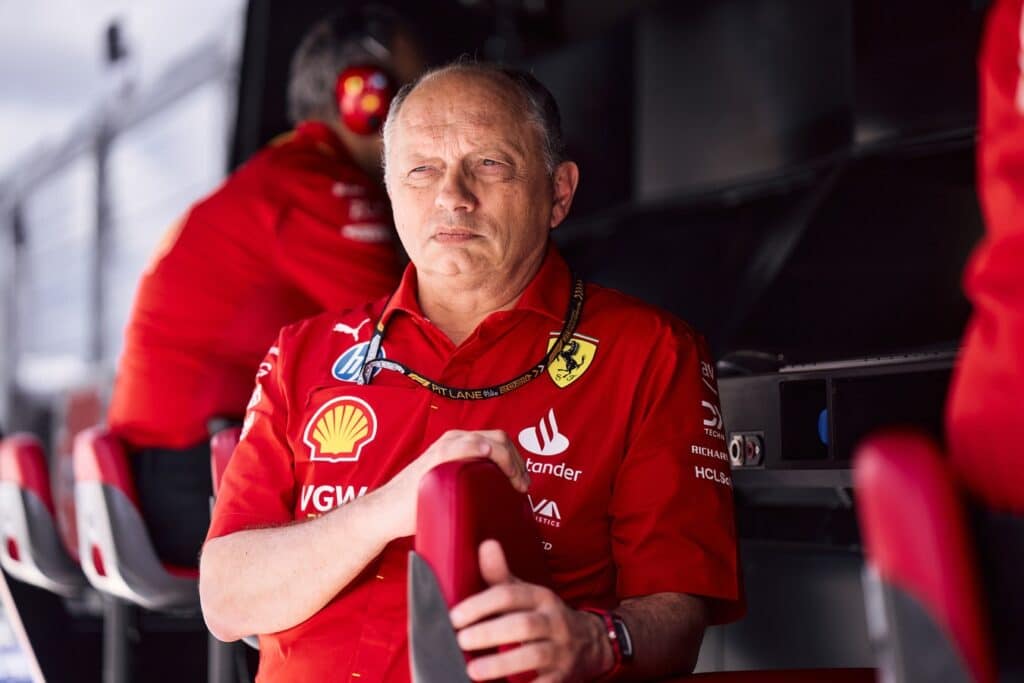
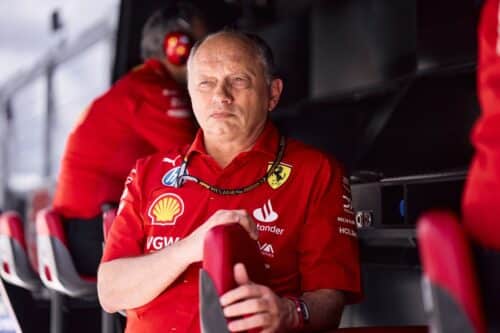
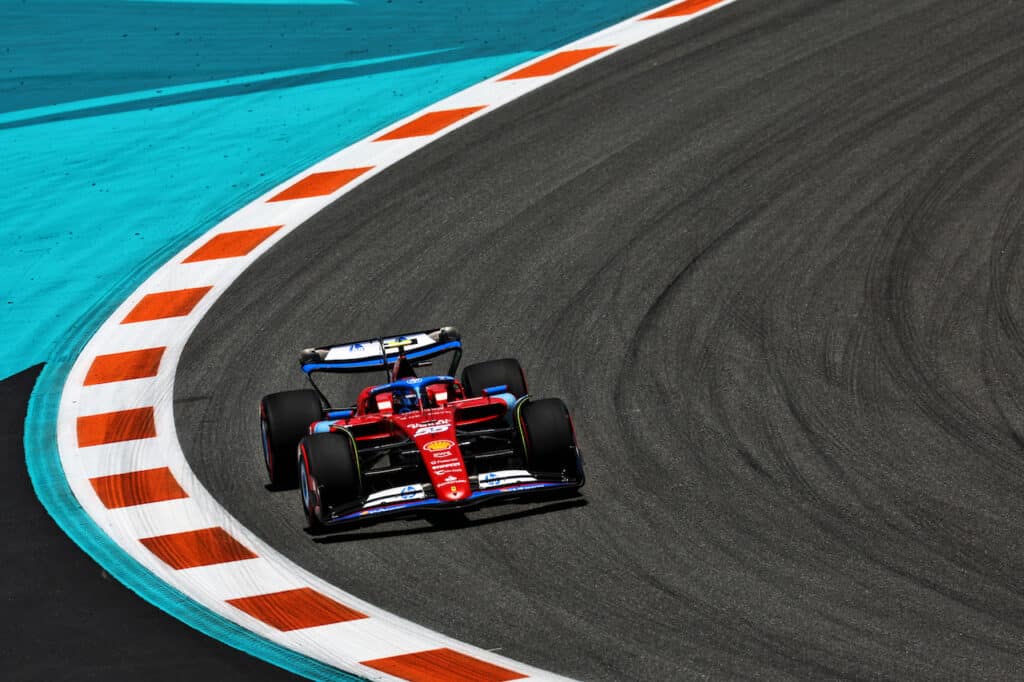
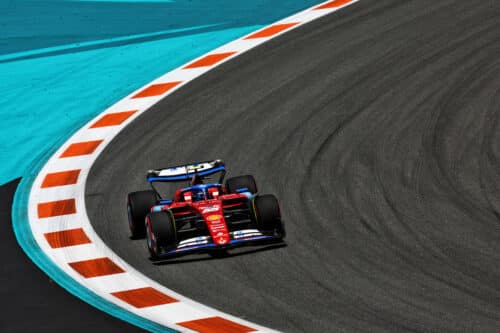

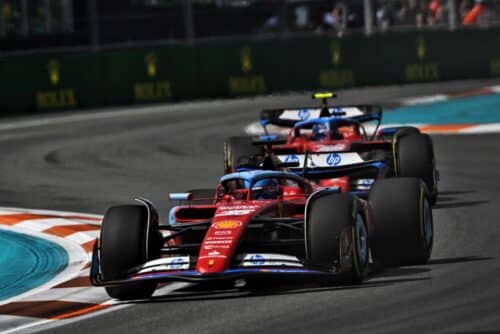


![Formula 1 | Capelli: “Newey in Ferrari? Right man at the right time” [VIDEO]](https://f1grandprix.motorionline.com/wp-content/uploads/2024/05/newey-ferrari-redbull-1024x548.jpg)
![Formula 1 | Capelli: “Newey in Ferrari? Right man at the right time” [VIDEO]](https://f1grandprix.motorionline.com/wp-content/uploads/2024/05/newey-ferrari-redbull-500x268.jpg)
![Formula 1 | Capelli: “Lambiase is the most important person for Verstappen” [VIDEO]](https://f1grandprix.motorionline.com/wp-content/uploads/2024/05/lambiase-f1-redbull-1024x553.jpg)
![Formula 1 | Capelli: “Lambiase is the most important person for Verstappen” [VIDEO]](https://f1grandprix.motorionline.com/wp-content/uploads/2024/05/lambiase-f1-redbull-500x270.jpg)









